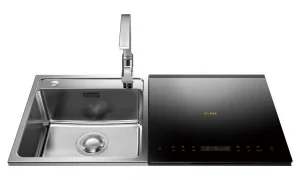Introduction
Python is a versatile and powerful programming language that has been gaining immense popularity over the years. Known for its simplicity, readability, and extensive libraries, Python is an ideal choice for both beginners and experienced programmers. In this article, we’ll explore the world of Python coding, from its fundamental principles to its application in various domains.
The Basics of Python
- Readability and Simplicity: Python’s syntax is easy to read and understand. Its use of indentation for block structure makes the code more visually intuitive, making it a great language for beginners. For instance, consider the following Python code snippet to print “Hello, World!”.pythonCopy code
print("Hello, World!") - Versatile Data Types: Python supports various data types, including integers, floats, strings, lists, dictionaries, and more. This flexibility allows programmers to work with diverse data structures, making it suitable for a wide range of applications.
- Dynamic Typing: Python uses dynamic typing, which means you don’t need to declare variable types explicitly. The interpreter infers the data type, making the code concise and easy to write.
- Rich Standard Library: Python comes with an extensive standard library that includes modules for everything from file I/O to web development. This vast ecosystem of libraries helps you accomplish tasks more efficiently.
Applications of Python
Python’s versatility makes it a top choice for a variety of applications:
- Web Development: Frameworks like Django and Flask enable web developers to create robust and scalable web applications. Python’s simplicity and readability accelerate the development process.
- Data Science and Machine Learning: Python is widely used in data analysis, machine learning, and artificial intelligence. Libraries such as NumPy, Pandas, Matplotlib, and scikit-learn provide essential tools for data manipulation, analysis, and visualization.
- Scientific Computing: Python is an essential tool for scientific research and computations. Scientists and engineers use libraries like SciPy and SymPy to solve complex mathematical problems and simulations.
- Automation: Python is excellent for automating repetitive tasks. You can create scripts to streamline processes, manage files, or even interact with APIs.
- Game Development: Python is gaining traction in the game development industry with libraries like Pygame. It’s a great choice for creating 2D games and prototyping.
- IoT (Internet of Things): Python is suitable for programming IoT devices. MicroPython and CircuitPython are Python variants designed for embedded systems.
Coding in Python
Now, let’s dive into some Python coding essentials:
- Variables and Data Types: To declare a variable in Python, you simply assign a value to a name. Python will automatically determine the variable type.pythonCopy code
x = 10 name = "Alice" - Conditional Statements: Python uses ‘if,’ ‘elif,’ and ‘else’ for conditional branching.pythonCopy code
if x > 5: print("x is greater than 5") elif x == 5: print("x is equal to 5") else: print("x is less than 5") - Loops: Python supports ‘for’ and ‘while’ loops for iterating through data structures or executing a block of code multiple times.pythonCopy code
for i in range(5): print(i) while x < 10: print(x) x += 1 - Functions: You can define your own functions in Python to encapsulate a block of code for reuse.pythonCopy code
def greet(name): print(f"Hello, {name}!") greet("Bob")
Conclusion
Python is a versatile and approachable programming language suitable for various domains. Its simplicity, readability, and extensive library support make it an excellent choice for beginners and experienced programmers alike. Whether you’re building web applications, diving into data science, or automating tasks, Python offers a robust platform to bring your coding ideas to life. So, if you’re considering learning a programming language or adding a new one to your repertoire, Python should be at the top of your list. Happy coding!
Visit- Python classes in Pune








































